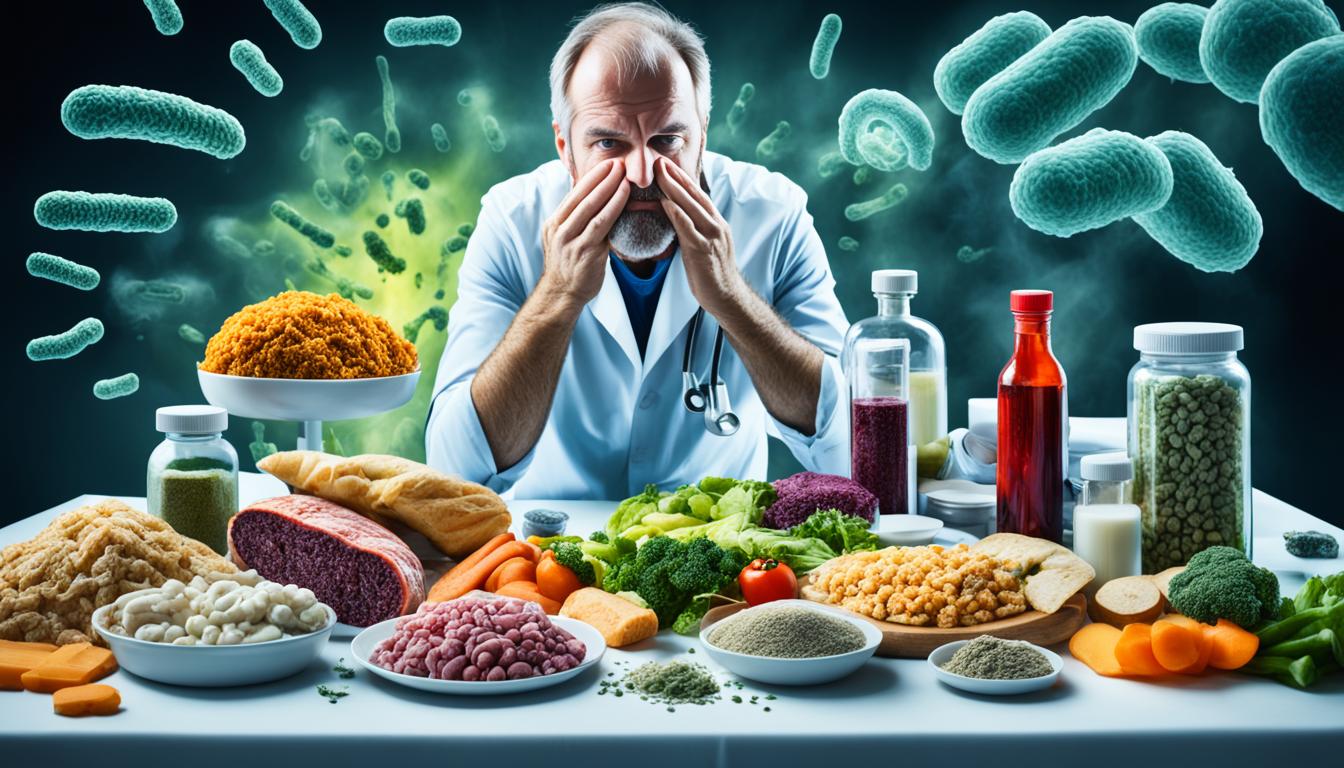Food-borne illness comes from eating food that’s not safe. It can be from bad food handling, not storing food well, or food getting infected. Illness might make you feel sick in your stomach or cause more serious problems. Signs include feeling nauseous, throwing up, having a running stomach, feeling pain in your belly, and a high temperature. What you experience can depend on the bad germ you get.
Handling food poorly, storing food wrong, and letting germs in like Salmonella or E. coli can make you ill. These bugs can get into food if it’s not prepared safely. This is why keeping to safe kitchen and food storage rules is very important to avoid getting sick.
Spotting a food-related sickness early is key. Doctors look at what’s making you feel bad, run tests on your food or poop, and figure out the harmful germ. Knowing exactly what bug you catch helps to treat you right away, and it keeps more people from getting ill.
Even though it’s still in the works, using stem cells to treat some food poisoning cases could be a big step. Stem cells can turn into needed cells to fix your body. As we learn more through tests, stem cell treatment might help with issues that last after you get ill.
Key Takeaways:
- Getting sick from food happens when it has dangerous bacteria, viruses, or parasites.
- Symptoms can be different for each person, but often make you feel sick, causing pain, and leading to fever.
- Not handling or storing food right, or letting germs in, are major reasons for food illness.
- To find out what makes you sick, doctors look at your symptoms and test your food or stool.
- Stem cell therapy might be a good new way to treat some severe food-borne illnesses.
Symptoms and Causes of Food-borne Illness
Food-borne illness comes from eating food that’s not clean. Knowing the signs and how it happens helps keep you and your family safe.
Symptoms of Food-borne Illness
What you feel can change, but many people get these signs:
- Nausea
- Vomiting
- Diarrhea
- Abdominal pain
- Fever
These issues start a few hours or days after eating bad food. Some get sicker than others. It all depends on the person and how much bad food they ate.
Causes of Food-borne Illness
Bad food can come from many places. The top reasons are:
- Food contamination: It happens when food has bad things like bacteria or viruses. Common ones include Salmonella, E. coli, norovirus, and more.
- Food handling practices: How food is touched and stored can add germs. For example, not washing hands or keeping raw meat away from cooked food.
Bad food can happen when not clean things touch it. This might be dirty food, hands, or tools. Cooking food right and keeping it clean is key to stopping sickness.
To avoid food sickness, learn the warning signs and how it spreads. Always use safe cooking and cleaning habits. This helps cut the risk of getting sick from food.
Diagnosis and Stem Cell Therapy for Food-borne Illness
Diagnosing food-borne illness is key for good treatment and stopping its spread. Doctors look at your symptoms and test samples from you or your food. They find out which germ is causing the illness. Getting the right diagnose early is crucial for choosing the right treatment.
Using stem cell therapy for food illnesses is becoming more popular lately. Stem cells can turn into many types of cells. They help fix damaged tissues. This method is showing hope in treating the problems that come from food illnesses over time.
However, more studies and tests are needed to be sure stem cell therapy is both safe and works well. Experts are working hard to learn more and see how stem cells can help. With ongoing research, new and better ways to treat food illnesses might be found.

